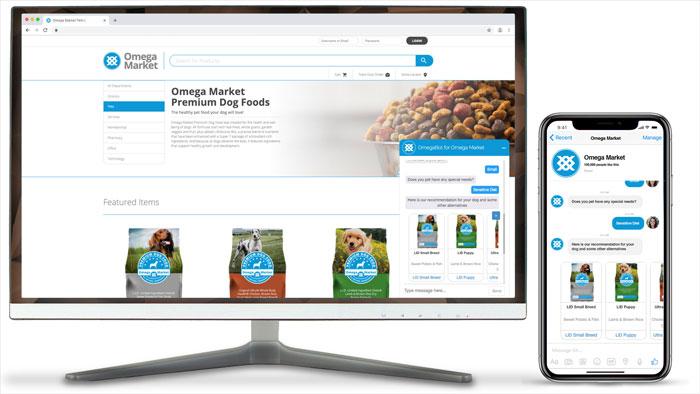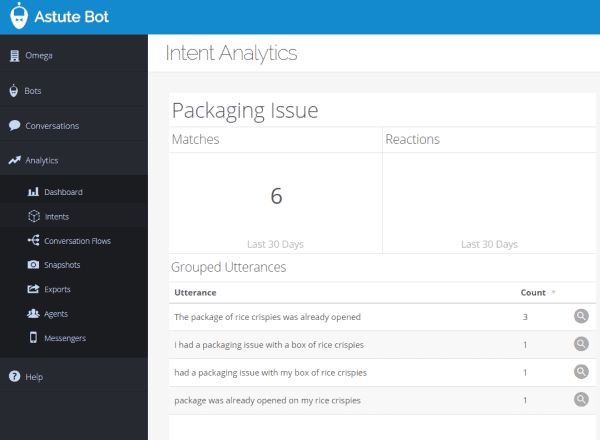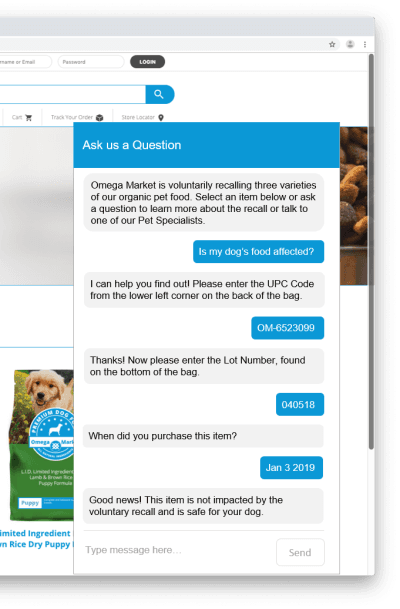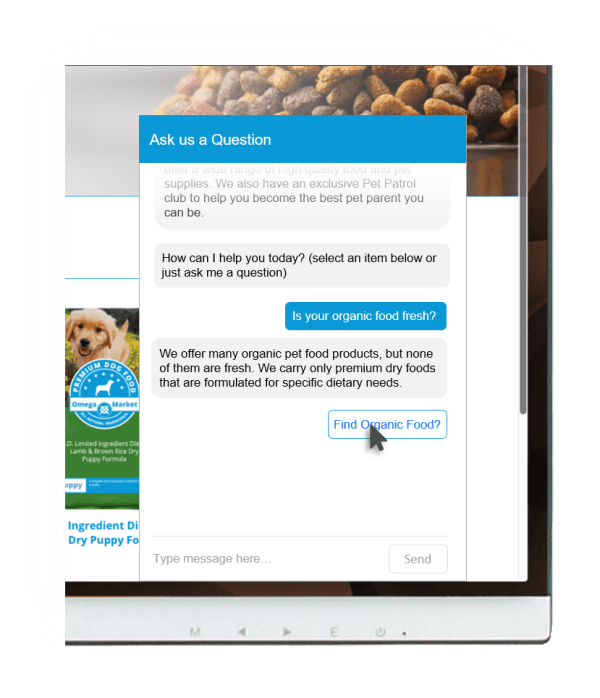We know customer self-service is how people want to interact with brands, and CX trends and stats tell us they now expect to be able to more than get an answer to a question. In fact, even going back to 2012, a Coleman Parkes survey found 91% of consumers saying they would use online self-service knowledge sources if available, and 75% prefer online support as long as it is reliable.
But what would customer self-service really look like for your company today? In this post, we share seven best practices for implementing self-service on your digital properties, illustrating each with self-service examples.
1. Pay attention to personalization and context
Consumers share a lot of information with companies, and they expect value in return. Personalize online experiences to the highest degree possible based on the information you have already collected about that person.
Of the many personalization examples of self-service technology, one that stands out is the FordPass app. Once drivers log in, the app tailors information based on their vehicle. When they ask questions, for instance about in-vehicle technology, the app can give them a personalized answer based on the technology within their specific vehicle.
Even if consumers do not log in, there are still contextual clues you can leverage to tailor their experience. For example, if a consumer engages with a chatbot while on the homepage of your website, there is only so much you can personalize that experience. But if they navigate to a particular product's page, you can infer they are interested in that product and tailor the chatbot's help options accordingly. Geo-location can be used in a similar way to show consumers the store locations nearest them, instead of having them scan or filter through all your locations. This kind of technology-driven personalization is often used to entice new customers, but it is time to expand the functionality to enhance experiences for existing customers to drive retention.
2. Offer guided conversations as well as free-form input
Consumers want choice. In the context of a self-service chatbot, it is important to give consumers the option to quickly select guided options based on common issues or questions (especially useful on a mobile device because it limits the amount of typing) or to ask questions in natural language.
Our next self-service example, Blue Diamond's website chatbot, does an excellent job of this. When consumers engage the bot, it offers them initial options based on its top products, helping consumers drill down to quickly find an answer.
Many service chatbots stop there, unable to go beyond strict pre-programmed paths. But the best practice is to allow consumers to also ask questions in natural language, as in the example above. The consumer could have chosen to keep clicking through to find gluten information, but instead asks outright "is almond milk gluten free?" and gets a direct answer that can immediately inform their purchase decision.
3. Be available (and seamless) across different channels
The best self-service websites actually go beyond just the website, allowing the same level of service across all the platforms where consumers want to engage. For example, launching the same core bot functionality across your website, mobile app, SMS, and Facebook Messenger ensures a consistent experience is being presented to consumers regardless of where they choose to interact. In the example below from a fictional food retailer, Omega Market, the same fundamental experience is available across two platforms.

This approach combined with personalization lets consumers "change lanes" based on their preference and still get consistent, in-context self-service. The net effect is to reduce customer effort, which has a significant impact on customer satisfaction and retention: in fact, CEB found that 96% of customers who had to spend a lot of effort to get their issue resolved ended up leaving the company. Reducing effort and enabling convenient service options across channels and devices makes for lower churn.
4. Don't forget about escalation
When launching self-service technology, many brands make mistakes when it comes to escalation. In fact, Forrester predicts that this year will bring consumer backlash against chatbots in large, part because 60% of deployments will fail to offer escalation options.
It is important to allow consumers to get in touch with a live agent at any point along their self-service interaction, and enable that interaction to happen within the existing channel (vs. asking a consumer to call a hotline or fill out a form). Consider offering escalation via text chat, voice call, or video call. Video can be especially helpful if consumers or agents need to physically show a product or situation to one another.
In the example below, consumers can choose to escalate at any time but are proactively offered the opportunity to connect with a live agent at a critical time – during online checkout.
Beyond the impact of escalation on the consumers, also consider the impact on the agent. In the self-service example above, the agent is given the transcript of the bot interaction, a case is automatically created and known information pre-populated, and suggested next steps and contextual information added to the sidebar of the case workflow. It is important to enable a seamless transition within the agent's normal case workflow, regardless of the self-service channel.
5. Continually seek out opportunities to improve your customer self-service
Products, policies, and information are constantly changing. While it is good to strive for high accuracy from the get-go, self-service is not a "set it and forget it" endeavor. Within its first month, Blue Diamond's website chatbot was able to answer consumer questions with a 90% accuracy rate, but as their administrators monitor the questions coming in, they are continuing to add and update new information to improve the accuracy even more.
In the fictional example below, unanswered questions related to packaging have been automatically clustered together to make them more actionable.

The most efficient way to manage this is to use a learner component within your self-service technology that can track questions that do not currently have an answer and alert you to new content that should be created. Keep in mind that a large volume of consumer questions may be quite similar, so it is important to use a tool that can analyze the intent of questions and intelligently group related topics for you to review.
6. Think about specific use cases you could address
Consumers now want self-service to go beyond simple ask-and-answer (although addressing FAQs is a great "version one" for a self-service chatbot), so we recommend giving some thought to what other common use cases you might be able to automate via self-service.
For example, a chatbot could serve as a first line of defense in the event of a product recall. As soon as a recall takes effect, the initial chatbot prompts could ask consumers whether they are looking for recall information. If so, the bot could ask for product details like lot number and purchase date to immediately tell them whether they are affected. If they are, the bot can kick off the compensation process more quickly via automation.

Consumers are able to get questions answered in a matter of seconds, and by handling part of the contact volume spike due to a recall, reducing hold times for those customers that choose to call.
7. Put customer self-service data to good use
As with customer questions or complaints from other sources, questions asked via self-service can be a great source of voice of customer (VOC) insight. An advantage to using self-service interaction data is that it is already in a text format, since interactions take place via web chat, SMS, and social messaging. This unstructured data can be analyzed to spot trends in consumer preferences and opportunities for marketing campaigns or product development changes.
For example, a leading CPG company used trends in customer questions to make a minor packaging change that resulted in increased revenue. They noticed an increase in the amount of questions about whether their yogurt products were gluten-free (which they are). By simply adding "gluten-free" to the product packaging, they were able to drive increased sales in that segment.

In the example above, our fictional market could be monitoring self-service questions related to fresh options for organic dog food and consider adding refrigerated fresh pet food selections at their stores, if the volume justified the decision.
Companies can learn a lot from examples of self-service technology, and more easily visualize how it could work for them based on what other brands are doing. Emplifi specializes in helping consumer brands have engaging, meaningful, useful interactions with customers to drive value and competitive differentiation.
We would be happy to create and implement a digital self-service strategy for you, leveraging our 25+ years of customer care expertise. Schedule a demo with us today to get started.
Editor's Note: This article was originally published on astutesolutions.com. Any statistics or statements included in this article were current at the time of original publication.
























